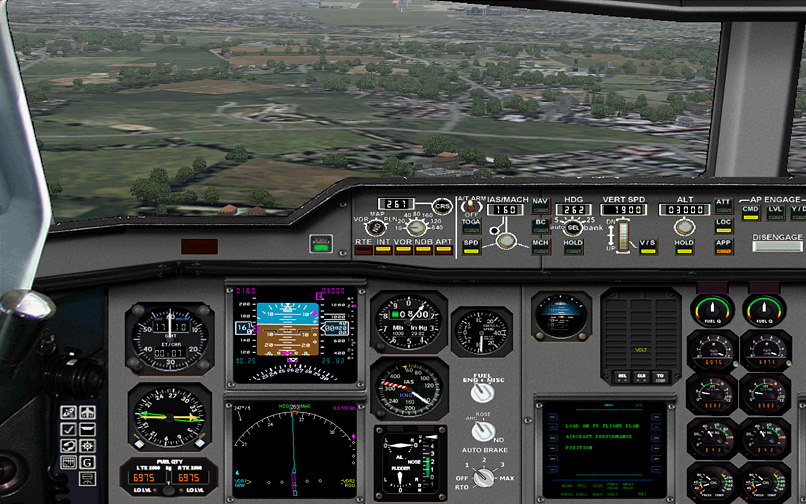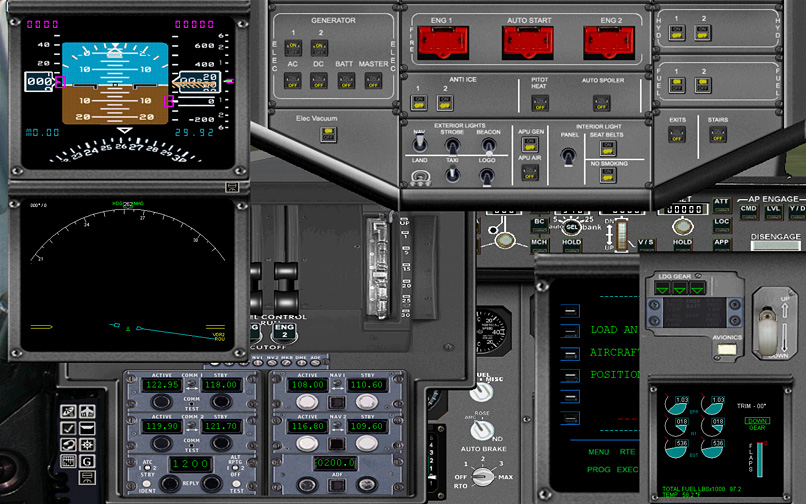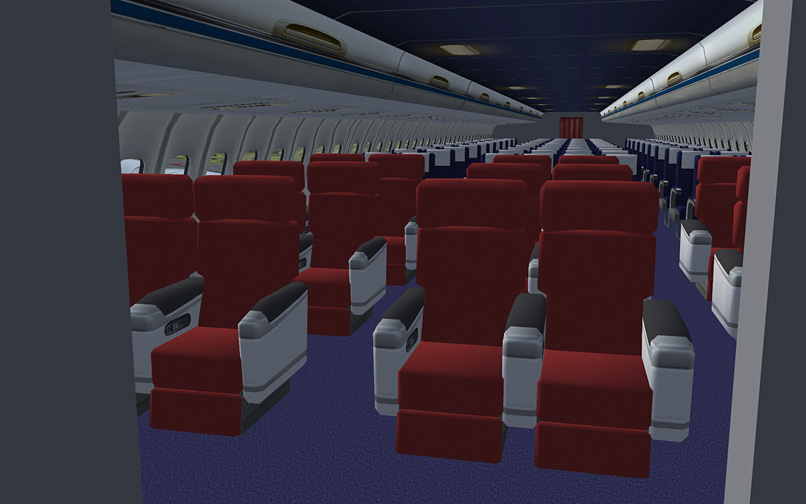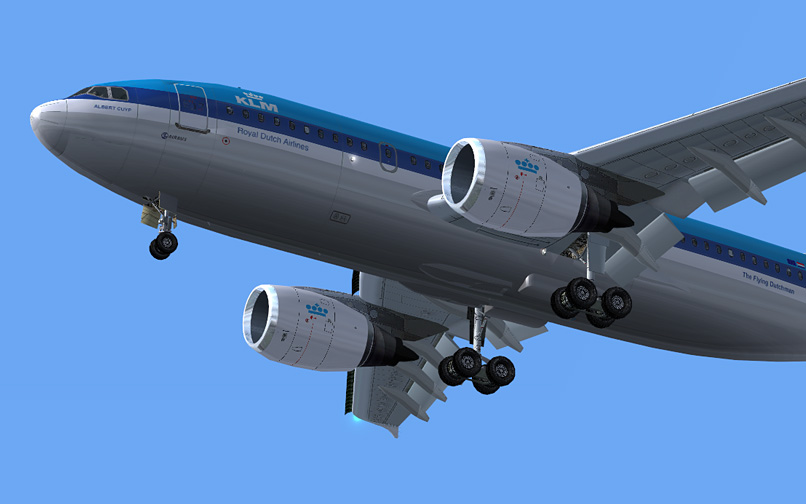Abacus Fly the Airbus Fleet A310-300
review
The Airbus A310 is a medium to long-range widebody airliner based on the larger A300. The A310, referred to as A300B10 in the early design stage, can seat about 200-220 passengers and was the second aircraft type developed by Airbus. The A310 program was launched in July 1978 and the first flight of the A310 occurred on April 3 1982. The first A310 entered commercial service with Lufthansa in April 1983. The A310 officially ceased production in July 2007, though five orders from Iraqi Airways remained on the books until July 2008.
This Abacus package contains six aircraft: Airbus A310-300, A319-100, A320-200, A330-300, A340-600 and the A350-800. The package comes with one sound set, which is used by all six aircraft.
Like the other aircraft in the package, the A310-300 is not a work of art. Although the exterior model looks all right (sadly only a General Electric powered model), the liveries are not very well done. For example, the clearly visible grey lines are not very appealing, the top-side of the wing is too dark and there is no registration on the bottom of the wing. Also, some animations are not right or not present at all. The stabilizer trim is not animated, the landing gear is not at the right angle and doesn't have suspension.
The flight dynamics are not that good either. It seems that an extreme high trim setting is required to successfully rotate the aircraft. The approach and landing suffers from the trim problem as well, you need to trim all the way up and pull back the stick to prevent a nose down attitude on approach. Also, the aircraft is not stable on the ILS. It's best to follow the glide scope manually, because the autopilot can't keep the aircraft on the glide path. The 2d panels and the virtual cockpit are simple and don't look like the real A310 cockpit. Instead of typical Airbus systems, flap settings, auto brake, etc, many buttons and handles do look like (and work like) the ones used in the FS2004 default (Boeing) panels. Don't expect systems like TCAS and GPWS, those are simply not modeled. A simple FMC can be used to load FS flight plans and use them to navigate during IFR flights.
Some nice features are: A passenger cabin which is fully modeled into the virtual cockpit. The default viewpoint in the virtual cockpit mode is the virtual cockpit itself, but with a small program called 'Cabin Views' you can set other viewpoints in the virtual cockpit, like 'Rear Coach Seating' and 'Forward Business Class'. Also, the wings and engines are visible through the cabin windows. Air stairs, a fuel truck and baggage carts show up around the aircraft
with the wing fold command.
The engine sounds are nice, both internal and external. It resembles the A310 General Electric engine sound quite well. However, the other five aircraft in this package would benefit from separate sound sets, because the A310 General Electric CF6-80C2 engines sound different than the CFM or Rolls-Royce engines of the other aircraft. The 48 pages pdf manual is well written and covers the features of all six aircraft in a user-friendly way.
--
the good
the bad
License |
: | Payware |
Price Indication |
: | $29.95 |
Panel |
: | Yes |
Virtual Cockpit |
: | Yes |
Wingview |
: | Yes |
Sound |
: | Yes |
Developed for |
: | FS2002 |
Compatibility |
: | FS2004 FSX |
Wingflex |
: | No |
Landing gear |
: | Unrealistic, no suspention |
Rudder effect |
: | Realistic |
FS2004 |
: |
|
FSX |
: |
|
Links
notes
Add a Comment





There are no comments for this aircraft